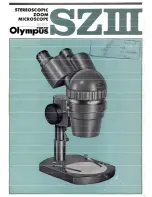
LEFT TOOL AREA AND HARDWARE CONTROL TOOLS
LSM 710 and LSM 780
Carl Zeiss
Acquisition Tab
Systems
86 M60-1-0025
e
02/2010
5.2.12
Tool Group Multidimensional
Acquisition: Z-Stack
To activate the Multidimensional Acquisition tools
the check boxes below the action buttons have to
be checked. Once checked the tools are active and
will be used for acquisition. If the Z-Stack tick box
below the action buttons is checked the Z-Stack
tool is visible. When
Start Experiment
is pressed
the system will perform a Z-Stack.
The Z-Stack function permits scanning a series of
XY-images in different focus positions resulting in
a Z-Stack, thus producing 3 dimensional data from
your specimen.
For the definition of the first and last image of the stack it is either possible to use the
Mode
First/Last
(Fig. 76) or to use
Center
(Fig. 77). In case a
Piezo
focusing device is attached to the system, the Piezo
device can be chosen for the acquisition of the stack.
5.2.12.1
How to Proceed Setting a Z-Stack Using First/Last Mode
Focus onto the specimen and start a
Continuous
scan. While scanning change the focus using the
Focus
tool (see section
Tool Group Online Acquisition: Focus Tool
), or the
Z-Stack Navigation
(see below),
or use the focus drive of the microscope (see manual of the microscope). When you reach the position
within the specimen, where you would like to start the stack, hit
Set
First
and this position will be taken
as the first position in the stack.
Move the focus into the other direction until the end position within the stack is reached, then hit
Set
Last
. These focus positions are then indicated next to Set First and Set Last.
In addition,
Range
shows the total height of the stack in micrometers. The Focus
Position
indicates the
current position of the Focus with the Range.
The
Number of Slices
and the value for the
Interval
between the slices are adjusted accordingly. With
Keep
Interval
checked the number of slices is adjusted, with
Keep Slice
being checked, the value for
the Interval between the slices is adjusted.
Changing the value for
Number of Slices
using the slider or the editing box, also changes the
Interval
but keeping the total
Range
for the stack.
Changing the value for the
Interval
changes the
Number of Slices
while keeping the total
Range
for
the stack within the possibilities of fitting the calculated number of slices into the Range. The total Range
may therefore vary to higher and lower numbers around the initial value of the Range.
Optimal Interval
sets the
Interval
to match the Nyquist criteria (see below) and accordingly adjusts the
Number of Slices
to keep the
Range
set with First/Last.
Fig. 76
Z-Stack tool First/Last mode with
Z-Stack Navigation displayed
















































